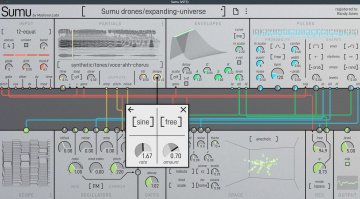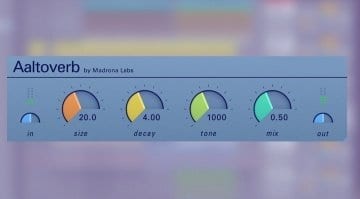Madrona Labs Sumu: Additive Synthesis Meets FM and More
A New Synthesiser (Not Only) for Experimental Sounds
Developer Randy Jones has been working on Madrona Labs’ Sumu for what seems like an eternity. The new synthesizer was unveiled in beta form back in May this year, and now it has finally been officially released. Like Aalto, Kaivo and Virta, Sumu is a plugin that stands out from the crowd. In particular, it is an interesting mix of spectral resynthesis and FM.
Madrona Labs Sumu Crosses Additive and FM Synthesis With Some Other Exciting Ideas
Madrona Labs Sumu is clearly aimed at people who are excited by new concepts and like to dig deeper into synthesizers. That’s because Sumu doesn’t sound like a ‘typical’ plug-in based on subtractive synthesis, wavetables or a virtual analogue sound engine. Instead, it’s a cross between additive resynthesis and FM, with a dash of granular vector field spatialisation. Sounds a bit mad, doesn’t it?
Sounds in Madrona Labs Sumu are implemented with up to 64 partials, which are also expanded in bandwidth. For each partial, parameters such as frequency, volume and its ‘noise’ can be changed. According to the manufacturer, sounds ranging from ‘crazy’ to natural are possible.
The Accompanying Vutu App Turns Samples Into New Sounds
Vutu, the free companion app, plays an important role. It allows you to create the raw material for Sumu from your own samples. Yes, this is reminiscent of Sonic Charge Synplant 2 and Dawesome MYTH, as well as its free version, ZYKLOP.
Vutu offers a few additional settings to help you create partials from the sample in a particular direction in advance. It also encourages experimentation.
More Features of Madrona Labs Sumu
As well as a Moog-inspired envelope section and filter, there are low-pass gates, an FM module and something called a pulse. This is basically a modulation source for resynthesis. This allows a sound to move fluidly in different directions: rhythmic, noisy, organic or synthetic.
There is also a Scope section that graphically displays the creations. The Space module is also important. This is where you determine how the individual partials ‘fly’ through space – spatial audio also plays a role here.
Those familiar with the company’s plug-ins will recognise Madrona Labs’ Sumu patcher. As with all Madrona Labs plug-ins, the aim here is to make it easy to connect the individual sections/modules. This makes it possible to create complex patches quickly and clearly. In this sense, Sumu works like a West Coast-style modular synthesiser.
Not Your Everyday Synth
You can already see, or rather hear, that Madrona Labs Sumu is unusual. I was very curious when the beta version was released in May, but the spark didn’t really jump right away. The beta still had a few problems. In particular, the CPU consumption was still a bit high. I assume that the version now available runs more smoothly and perhaps has a few more attractive presets.
In general, though, Sumu is more likely to appeal to people who are excited by unusual concepts and are not looking for the umpteenth bread-and-butter synth. In this sense, the plug-in is an innovative product that will hopefully find its fans. Maybe I’ll give it another chance and install the latest demo version.
Specifications and Price
Madrona Labs Sumu runs as VST3 and AU on MacOS (10.14 or later) and Windows (10 or later).
The plugin is currently available at an introductory price of $129 – the regular price is $179. A free trial is also available on the manufacturer’s website.

 5,0 / 5,0 |
5,0 / 5,0 | 






